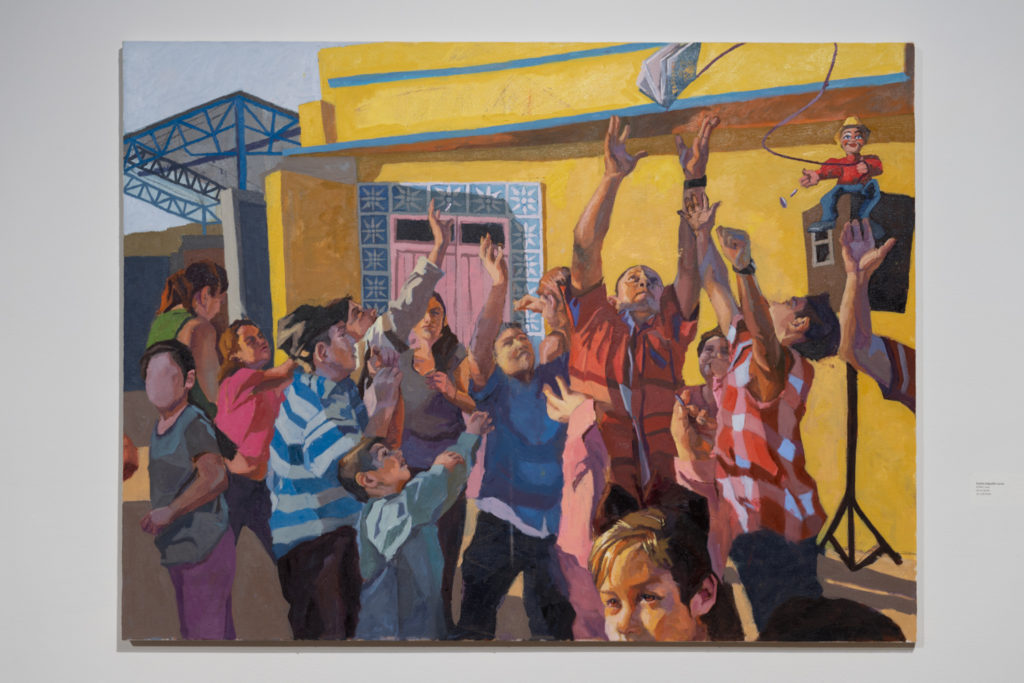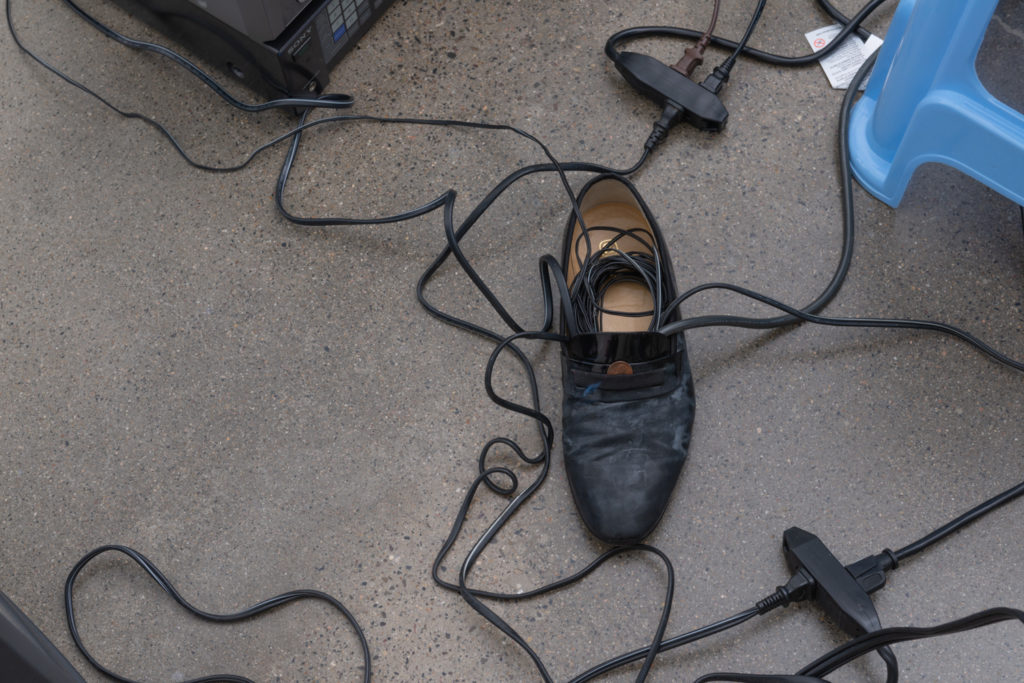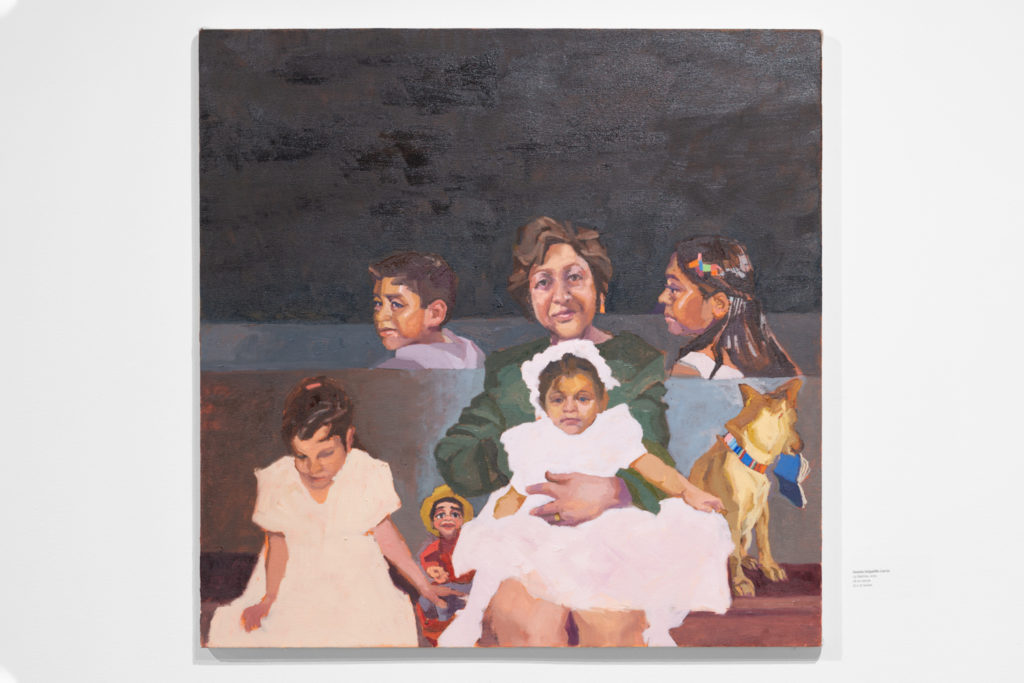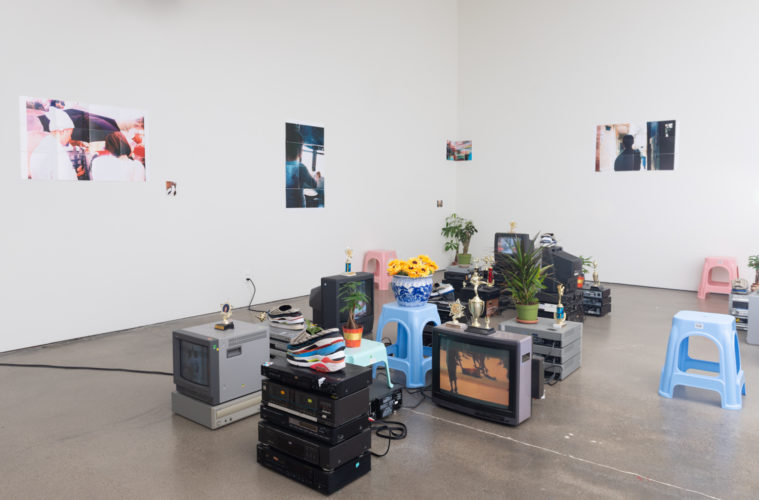The Irvine Fine Arts Center’s two exhibitions investigate family dynamics, culture and collective memory, as perceived by 20-somethings and millennials living in Orange County; albeit by those who are often regarded as minorities but are rapidly becoming mainstream residents. “From Here to There: A Time Machine” is a collaborative multimedia exhibition, created by two Chinese-Americans in their 20s, who grew up in the O.C. “A Trace is Not a Map” looks at the lives and legacies of Latinos through the eyes and talents of four visual artists.
The two shows, running side by side at the center, inform viewers of how cultural groups look at their identities through various art forms. Yet the role of the curator of these exhibitions is important. Curator Virginia Arce, born in Mexico City and raised in Glendale, “has unexpectedly stumbled onto an arts leadership position in Orange County,” explains Sarah Rafael Garcia in the Voice of OC blog. She adds, “As a woman of color and first-generation MFA graduate in critical and curatorial studies from UC Irvine, national statistics prove she was at a disadvantage the moment she declared art as her major. Yet in contrast to most first-generation experiences, she was emotionally supported by her immigrant family to pursue an art career.”
While walking through the exhibitions, Arce demonstrated compassion for the artists, as well as for their work. Discussing “From Here to There: A Time Machine” in pieces by Susan Lin and Michael Chang, she expressed understanding and empathy for their explorations of their childhoods and ethnic legacies.

Daniela Delgadillo Garcia – “El Bolo” – 2019 (Courtesy of Irvine Fine Arts Center)
Gallery 1, housing this installation, contains a dozen TVs of early-1990s vintage, along with laser disc players from that period, trophies, plants and cut-up athletic shoes. The TVs play loops of visual scenes that Lin experienced and filmed while visiting her relatives in China recently to attend her grandfather’s funeral. Here are videos of Chinese landscapes as seen from the windows of a train, another of a small fire, a third of women in a park engaging in communal dances and exercises, and another of a family dining together. Lin rounds out her contribution to the exhibition with the accolades she received while growing up, for academics, sports and the arts.
Chang’s contribution to this exhibition include native Chinese plants, known as money and good luck plants, along with many pairs of athletic shoes, stacked on top of each other, or scattered around the gallery, alluding to his childhood interest in sports. Arce explains that the artists in this show create an immersive environment pairing technologies from the past with images about longing for a sense of home.

(Courtesy of Irvine Fine Arts Center)
The larger exhibition at the Center is “A Trace is Not a Map.” The title alludes to the Latino’s search for identity and recognition in a world that still oversimplifies people of color, often seeing them as marginal. This show also explores the broad spectrum of Latino experiences in the world today, as well as their existential issues of personal freedom and self-determination in an increasingly complex world.
The several figurative oil paintings by 20-something Daniela Delgadillo Garcia are mature in technique, as well as expressive in their depiction of longing for family and reverence for memories. “La Madrina,” a portrait of a compassionate mother with several children, a dog and a doll, evokes the desire for a supportive, extended family that people of all ethnic backgrounds crave. Her “El Bolo,” illustrating several teenagers reaching for a book in the air above them, has an ambiguous message; meanwhile, her “Infancia” is more direct, as it demonstrates two young boys caring for each other.
Albert Lopez Jr.’s video, “Jale: Class C, Moble Gallery,” of a young man pulling a large van down a street while attached to it by a rope, presumably expresses the difficulty of living and functioning in the world today.

Daniela Delgadillo Garcia – “La Madrina” – 2019 (Courtesy of Irvine Fine Arts Center)
More prosaic are William Camargo’s several photographs of his mother and father, titled “Mexican, American Paisa Nation #1” and “Mexican, American Paisa Nation #2.” These compassionate portraits of his parents in their working clothes — aprons for his mother, and an undershirt and hat for father — demonstrate to the world what daily life is like for many Latinos. Nearby, this artist’s contrasting archival inkjet prints, “Hey You Like My Tats Foo? Part 1” and “….Part 2” are portraits of dark-skinned artist friends, posing with stick-on prison tattoos, yet adopting stances of pride and even nobility.
The most conceptual piece in this exhibition is the abstract plaster and clay sculpture, “Make Time” by Adriana Baltazar. This harmonious, deftly crafted artwork, with its more universal artful aspect, transcends the artist’s Latino roots. While providing a counterpoint to the other pieces displayed, it helps to enhance the important of their message. Or as curator Arce explains, many of the art pieces in this second exhibition express the symbiotic relationship between hope and loss, joy and struggle, and illusion and disillusionment. She adds that there is complexity in every piece in this show, and most are open to interpretation.
“From Here to There: A Time Machine” and “A Trace is Not a Map” are on view through March 7 at Irvine Fine Arts Center; Mon.-Thu., 10 a.m.-9 p.m., Fri., 10 a.m.-5 p.m., Sat., 9 a.m.-5 p.m; cityofirvine.org/irvine-fine-arts-center/current-exhibitions.
Advertising disclosure: We may receive compensation for some of the links in our stories. Thank you for supporting Irvine Weekly and our advertisers.

